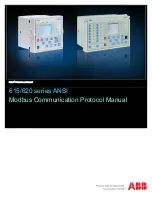
5
4.
NETWORK SETTINGS OF THE CONTROLLER
The controller stores the static network configuration. It is always used when static addressing
mode was selected or in automatic addressing mode, when it was not possible to get the
configuration settings from the DHCP server.
The controller can run in one of the two modes:
ź
Automatic addressing: DHCP
ţ
•
Static addressing
: DHCP
¨
In automatic mode (DHCP), after connecting to the network, the controller attempts to get the
network configuration from a DHCP server (e.g. router). Thanks to this, manual configuration of
network parameters is not needed. In the absence of a DHCP server on the network, the
controller will operate according to the static configuration (manual setup).
When choosing static addressing, you should configure network parameters in such a way that
the controller is able to operate on the subnet and there is no conflict of IP addresses (devices in
the network must have unique IP addresses).
The default network settings of the controller:
DHCP: Włączone
ţ
IP:
192.168.0.50
Mask: 255.255.255.0
Gate:
192.168.0.1
Should the controller operate in automatic mode in the network and receive IP address from the
DHCP server, the detaching of the network cable will result in the loss of IP address and another
attempt to get the new IP address from the DHCP server. If that fails, the controller switches to
operate with a static configuration.
It is recommended to use automatic addressing and connect the controller to the network with a
running DHCP server.
Should the controller be connected directly to the computer (no DHCP server), you must
manually set the network parameters of both the computer and the controller to operate in one
network.


































